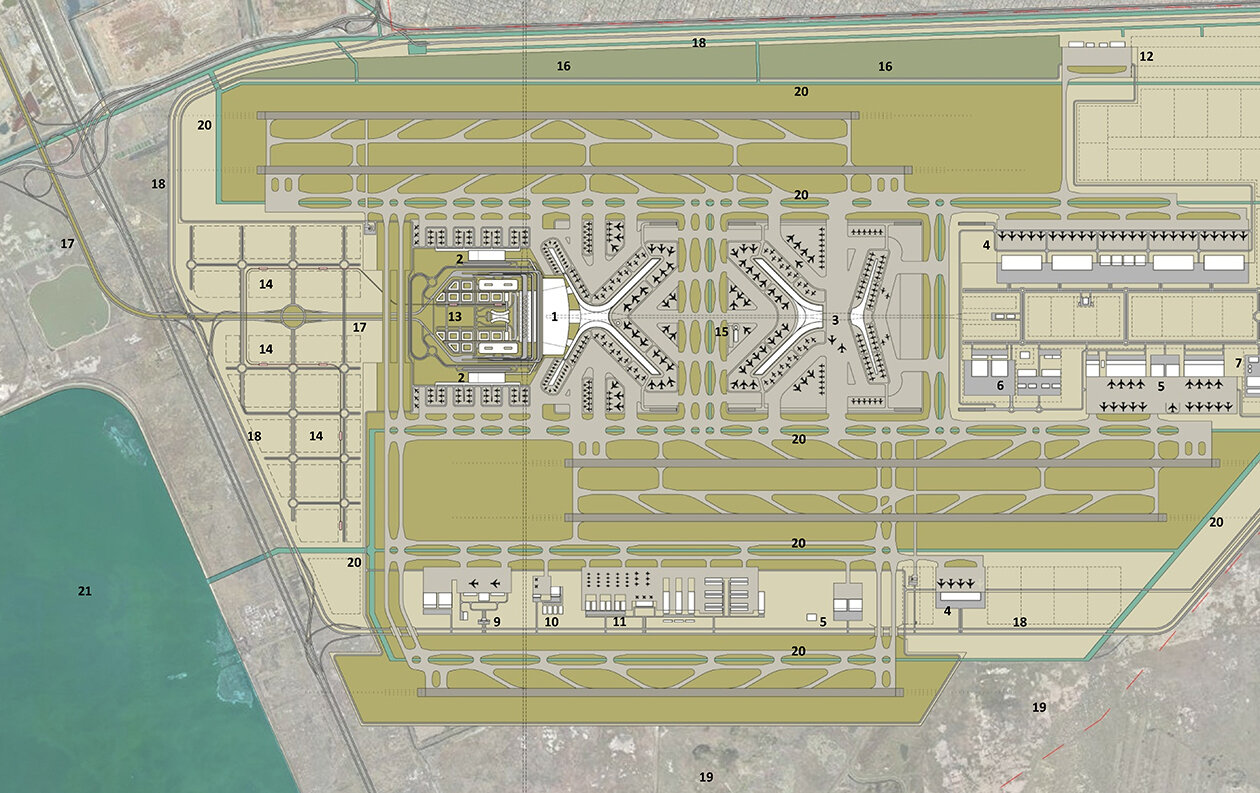
Airport Master Plans are essential for the smooth operation and future growth of airports. These plans outline the long-term development strategy, ensuring that airports can handle increasing passenger numbers, cargo loads, and technological advancements. But what exactly goes into an airport master plan? In short, it includes everything from runway expansions to terminal upgrades, environmental considerations, and even community impact assessments. Understanding these plans can help you appreciate the complexity and foresight required to keep airports running efficiently. Whether you're a frequent flyer, an aviation enthusiast, or just curious, these 19 facts will give you a deeper insight into the intricate world of airport planning.
Key Takeaways:
- Airport Master Plans are like blueprints for airports, helping them grow and adapt to new technologies over a 20-year period. They involve input from various stakeholders and address environmental impact.
- Successful Airport Master Plans, like those of Denver International Airport and Singapore Changi Airport, focus on safety, efficiency, and passenger experience, boosting local economies and complying with regulations.
What is an Airport Master Plan?
An Airport Master Plan is a comprehensive document that outlines the long-term development strategy for an airport. It includes everything from infrastructure improvements to environmental considerations. Here are some fascinating facts about these crucial plans.
-
Blueprint for the Future: Airport master plans serve as blueprints for future development, ensuring that airports can meet growing demand and adapt to new technologies.
-
20-Year Vision: Typically, these plans cover a 20-year period, providing a long-term vision for airport growth and development.
-
Stakeholder Involvement: Developing an airport master plan involves input from various stakeholders, including government agencies, airlines, and the local community.
-
Environmental Impact: Environmental considerations are a key component, addressing issues like noise pollution, air quality, and wildlife management.
Components of an Airport Master Plan
An airport master plan is not just a single document but a collection of various elements that together form a cohesive strategy. Here are some of the main components.
-
Airport Layout Plan (ALP): This is a detailed diagram showing existing and proposed airport facilities, including runways, taxiways, and terminals.
-
Forecasting: Predicting future air traffic is crucial. Accurate forecasts help in planning for the necessary infrastructure and services.
-
Facility Requirements: Identifying what facilities will be needed to handle future demand, from additional runways to expanded terminal buildings.
-
Financial Plan: A financial plan outlines the funding sources and financial strategies for implementing the master plan.
Importance of Airport Master Plans
Understanding why these plans are important can help appreciate the effort that goes into creating them. Here are some reasons why airport master plans are essential.
-
Safety and Efficiency: Ensuring that the airport operates safely and efficiently is a primary goal of any master plan.
-
Economic Impact: Airports are significant economic drivers. A well-planned airport can boost local and regional economies.
-
Regulatory Compliance: Master plans help airports comply with federal and state regulations, ensuring they meet all legal requirements.
-
Community Relations: Engaging with the local community during the planning process helps address concerns and build support for the airport's development.
Challenges in Developing Airport Master Plans
Creating an airport master plan is a complex task that involves overcoming various challenges. Here are some of the common hurdles.
-
Funding: Securing the necessary funding for both the planning process and the subsequent development can be challenging.
-
Land Acquisition: Expanding an airport often requires acquiring additional land, which can be a contentious and costly process.
-
Environmental Concerns: Balancing development with environmental protection is a significant challenge, requiring careful planning and mitigation strategies.
-
Technological Changes: Rapid advancements in technology can make it difficult to plan for the future. Planners must anticipate and adapt to these changes.
Examples of Successful Airport Master Plans
Some airports have set the standard with their master plans, showing what can be achieved with careful planning and execution. Here are a few examples.
-
Denver International Airport: Known for its innovative design and efficient operations, Denver's master plan has been a model for other airports.
-
Singapore Changi Airport: Consistently ranked as one of the best airports in the world, Changi's master plan focuses on passenger experience and technological innovation.
-
Heathrow Airport: London's Heathrow has a comprehensive master plan that addresses capacity issues and environmental concerns, ensuring it remains a global aviation hub.
Final Thoughts on Airport Master Plans
Airport master plans are essential for the efficient and safe operation of airports. They guide the development and expansion of facilities, ensuring they meet future demands. These plans consider everything from passenger flow to environmental impact. Without them, airports could face congestion, safety issues, and inefficiencies.
Understanding the importance of these plans helps us appreciate the complexity behind airport operations. Next time you're at an airport, remember the meticulous planning that keeps everything running smoothly. From runway expansions to terminal upgrades, every detail is part of a larger strategy.
Master plans are not just blueprints; they're dynamic documents that adapt to changing needs and technologies. They ensure airports can handle increasing passenger numbers and evolving aviation trends. So, the next time you fly, know that a well-thought-out master plan is behind your seamless travel experience.
Frequently Asked Questions
Was this page helpful?
Our commitment to delivering trustworthy and engaging content is at the heart of what we do. Each fact on our site is contributed by real users like you, bringing a wealth of diverse insights and information. To ensure the highest standards of accuracy and reliability, our dedicated editors meticulously review each submission. This process guarantees that the facts we share are not only fascinating but also credible. Trust in our commitment to quality and authenticity as you explore and learn with us.


